Emblems and Mascots of Rulers:
The Teddy Bear
The name “teddy bear” comes from former U.S. President Theodore Roosevelt, whose nickname was “Teddy.” In November 1902, he travelled to Mississippi to help settle a border dispute between that state and Louisiana, and the governor took him bear hunting. Because the chase had been unsuccessful for several days, some of Roosevelt’s attendants captured a wounded young female black bear and tied her to a tree, so that the President could “get his shot.” Roosevelt, however, deemed this unsportsmanlike, and instead ordered a mercy killing. This anecdote became the topic of a political cartoon by Clifford Berryman in The Washington Post on November 16, 1902, with the double-entendre title, “Drawing the Line in Mississippi.” Morris Michtom, a poor Russian Jewish émigré in Brooklyn, who sold candy during the day and made stuffed animals at night, saw the drawing and was inspired to create a little bear stuffed with cotton, which he displayed in his shop window with a sign that read “Teddy’s Bear.” The toy was an immediate success. At the same time, in Germany, the firm Steiff independently produced its own stuffed bear. An American wholesaler exported 3,000 Steiff bears to America in 1903. The name “Teddy” became generic, especially after two bears with that name were presented to the Bronx Zoo. By 1905, Roosevelt used the bear as a mascot in his bid for re-election, though he actually disliked “Teddy” as a nickname and once called it “an outrageous impertinence.”
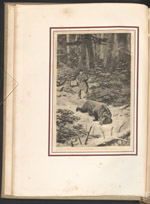 |
Theodore Roosevelt. The Wilderness Hunter: An Account of the Big Game of the United States and its Chase with Horse, Hound, and Rifle. New York: G. P. Putnam’s Sons, [1891],1893. [zoom] |
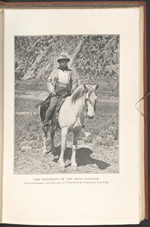 |
John Burroughs. Camping and Tramping with Roosevelt. New York: Houghton, Mifflin and Co, 1907. [zoom] That Teddy Roosevelt would be forever associated with a cute little bear seems ironic, given his personal record as a mass-killer of animals. In reference to his massacring 512 big-game animals, including six rare white rhinos in Sudan after the end of his presidency, the novelist Paul Theroux has called him an “evil twin to the Biblical Noah.” At the same time, Roosevelt was the first president to implement conservation in the USA, saving more than 230 million acres of wildlife habitat. In his book, the conservationist John Burroughs, who made the trip to Yellowstone Park with Roosevelt in 1903, writes: “Some of our newspapers reported that the President intended to hunt in the Park. A woman in Vermont wrote me to protest against the hunting, and hoped I would teach the President to love the animals as much as I did - as if he did not love them much more, because they had been part of his life.” |
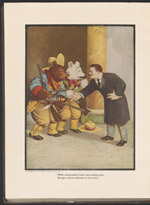 |
Paul Pier [Seymour Eaton]. More About Teddy B. and Teddy G., the Roosevelt Bears: Being Volume Two Depicting Their Further Travels and Adventures, illustrated by R. K. Culver. Philadelphia: E. Stern, 1907. [zoom] | Additional images: 
In 1905 and 1906, Seymour Eaton (1859-1916) wrote a series of stories about two bears, Teddy G. and Teddy B. (the “G” stood for gray and the “B” for black). Published under a pseudonym and syndicated in more than twenty newspapers, they ran for seven months at the height of Roosevelt’s popularity. |
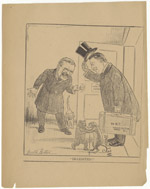 |
Harold Heaton. “Teddy and Billy Possum.” Initially Published in The Inter Ocean, Chicago, 1909. [zoom] In 1908, Theodore Roosevelt chose not to run for another term, and endorsed his then close political ally and future adversary William Howard Taft for the presidency. One toy company, eager to make profits by giving Taft his own stuffed mascot, designed a plush opossum marketed with the slogan, “Goodbye Teddy Bear. Hello Billy Possum.” Taft was elected, but the toy was a complete commercial flop. |
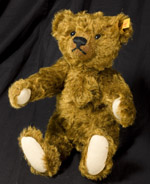 |
1905 Teddy Bear. Margarete Steiff GmbH, 2010. [zoom] This teddy bear has the distinctive button in the ear that is the trademark of the Steiff bears. It was devised by Franz Steiff in 1904 to keep counterfeits from being passed off as authentic, high-quality Steiff toys. The button originally had the symbol of an elephant printed on it, later replaced by the name “Steiff.” |
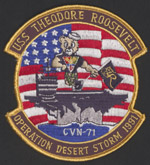 |
US Navy Patch, 1991. [zoom] Known by crewmembers as “Teddy Bear,”the aircraft carrier USS Theodore Roosevelt CVN-71 was launched in 1984 and saw its first action during Operation “Desert Storm” (Iraq) in 1991. |